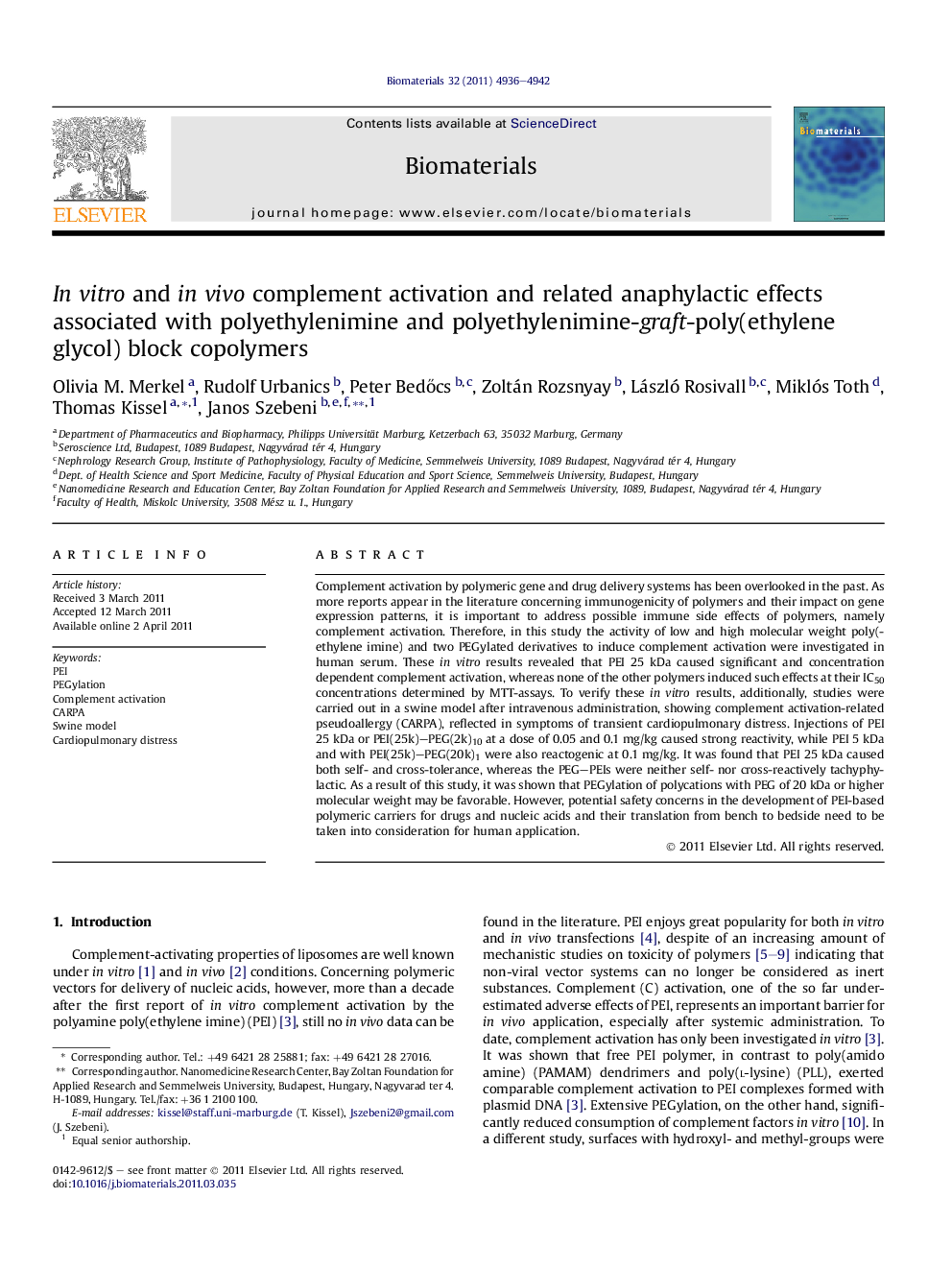| کد مقاله | کد نشریه | سال انتشار | مقاله انگلیسی | نسخه تمام متن |
|---|---|---|---|---|
| 7564 | 556 | 2011 | 7 صفحه PDF | دانلود رایگان |

Complement activation by polymeric gene and drug delivery systems has been overlooked in the past. As more reports appear in the literature concerning immunogenicity of polymers and their impact on gene expression patterns, it is important to address possible immune side effects of polymers, namely complement activation. Therefore, in this study the activity of low and high molecular weight poly(ethylene imine) and two PEGylated derivatives to induce complement activation were investigated in human serum. These in vitro results revealed that PEI 25 kDa caused significant and concentration dependent complement activation, whereas none of the other polymers induced such effects at their IC50 concentrations determined by MTT-assays. To verify these in vitro results, additionally, studies were carried out in a swine model after intravenous administration, showing complement activation-related pseudoallergy (CARPA), reflected in symptoms of transient cardiopulmonary distress. Injections of PEI 25 kDa or PEI(25k)–PEG(2k)10 at a dose of 0.05 and 0.1 mg/kg caused strong reactivity, while PEI 5 kDa and with PEI(25k)–PEG(20k)1 were also reactogenic at 0.1 mg/kg. It was found that PEI 25 kDa caused both self- and cross-tolerance, whereas the PEG–PEIs were neither self- nor cross-reactively tachyphylactic. As a result of this study, it was shown that PEGylation of polycations with PEG of 20 kDa or higher molecular weight may be favorable. However, potential safety concerns in the development of PEI-based polymeric carriers for drugs and nucleic acids and their translation from bench to bedside need to be taken into consideration for human application.
Journal: Biomaterials - Volume 32, Issue 21, July 2011, Pages 4936–4942